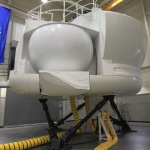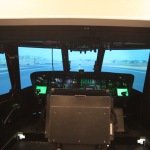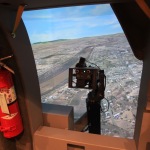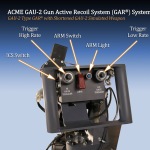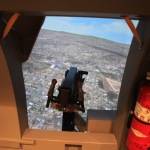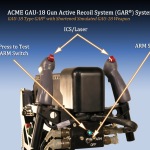Lockheed Martin Delivers HH-60G Trainer
Kirtland Air Force Base, N.M., has received a helicopter simulator for the HH-60G Pave Hawk personnel recovery helicopter.
Scheduled to enter service in April, the Super 60 is the first HH-60G simulator to incorporate aerial gunner stations on the motion platform, according to Vic Torla, director of the Aircrew Training and Rehearsal Support (ATARS) II program at Lockheed Martin’s Global Training and Logistics division. This will allow gunners to train alongside and experience the same motions as the rest of the flight crew. Previously, crews could only fully train together inside the actual helicopter, a modified Black Hawk that is designed to recover personnel from hostile locations.
The simulator has a visual system of three domes, three image generators and 19 projectors. There is a dome at the front for the pilot and copilot, plus two side domes for the gunner and flight engineer. There is also a minigun on one side and a .50-caliber on the other, allowing the flight engineer and gunner to hang out the windows and shoot.
The simulator works independently but can also connect to other training devices. It will model electronic warfare and defensive systems, allowing crews to practice scenarios such as combat search and rescue training, aerial refueling, formation flying, night vision goggle operations and basic checklist training.
Lockheed said it could not provide the specific cost of the Super 60, but the simulator is part of the 10-year, $1.1 billion ATARS II contract that was awarded in 2007. The ATARS II contract trains Air Force Special Operations Command crews on 79 crew positions in 18 fixed- and rotary-wing aircraft, including the HH-60G.
Nearly 100 Pave Hawks are in service with the Air Force, Air Force Reserve and Air National Guard, which deployed them to Afghanistan, Iraq and Libya.
- HH-60G Trainer
- HH-60G Trainer
- ACME GAU-2 Gun Active Recoil in Air Force HH-60G Trainer
- ACME GAU-2 Gun Active Recoil System
- ACME GAU-18 Gun Active Recoil in Air Force HH-60G Trainer
- ACME GAU-18 Gun Active Recoil System

